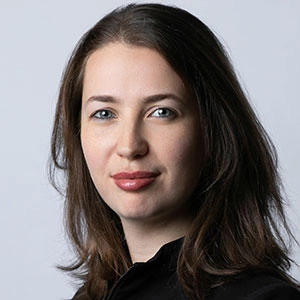What makes an ETF a 'thematic'?
Morningstar has developed a three-tier taxonomy for classifying thematic funds to help investors make sense of this expansive and diverse universe.
Thematic ETFs are exploding in popularity. The sector, which seeks to exploit emerging trends, has grown from $8 million under management just four years ago to almost $2 billion today, Morningstar data shows. Six of the eleven thematic ETFs on the ASX were launched in the last year and three more are on the way from ETF Securities directed at semiconductors, fintech/blockchain and hydrogen.
Investors are lured in by eye-catching returns and the promise of investing in the 'next megatrend' from artificial intelligence and lithium, to eSports and clean energy.
But what makes a theme? The line between sectors and themes is blurry, especially as sectors’ definitions have drifted through time. Among the most challenging distinctions to make is between technology sector funds and those that track one or more technology-related themes. BetaShares Asia Technology Tigers (ASIA)—theme or sector ETF?
In the absence of industry definitions, each provider has its own take on what makes a thematic ETF. As competition heats up, it can be beneficial to market your product as a 'thematic' if that's what's on-trend.
Morningstar analysts have developed a global thematic funds taxonomy to help investors define the universe and compare funds.
What's in, what's out?
Morningstar's definition of thematic ETFs is based on 'intentionality' rather than fund holdings. To identify this, analysts study fund prospectuses, marketing materials, index methodologies, and proprietary data points (such as investment objective).
Sustainable funds are included, provided they have a specific theme. Alternative energy funds, which invest in the clean energy transition, are included, but most broad ESG funds, which select stocks based on ESG scores, are excluded. For example, the BetaShares Climate Change Innovation ETF (ERTH), is included, but a broad-based ESG-focussed fund like VanEck Vectors MSCI Australian Sustainable Equity ETF (GRNV) is not.
To be included in Morningstar's taxonomy, broad technology funds must explicitly target one or more sub-themes, such as disruptive or next generation technologies. For example, ASIA and ETFS FANG+ ETF (FANG) are not included as they don’t exploit specific technology-related themes.
The results can be counterintuitive. The SPDR SSGA Gender Diversity ETF (SHE), is excluded on the grounds it’s designed to reward a broad set of companies with strong gender diversity metrics rather than track the trend toward a more equitable society.
There are some important omissions. Analysts have limited the universe to equity ETFs and included fixed-income ETFs.
"This is because their investment profile is less suited to capture the growth potential of emerging themes and consequently the market for these funds is largely non-existent" Morningstar analysts Kongkon Gogoi and Zunjar Sanzgiri say.
Mapping the universe
To make sense of the diverse universe of thematic funds, Morningstar analysts have developed a taxonomy. The framework first arranges the universe into four broad buckets: Technology, Physical World, Social, and Broad Thematic.
- Technological themes target the disruptive growth potential of technological change. These include themes like Fintech, Robotics & Automation, and Battery Technology.
- Physical World themes address the management of physical resources. Included in this bucket are funds that facilitate the transition to a low-carbon world, such as alternative energy funds.
- Themes in the Social bucket deal with structural changes in society. These themes may be politically oriented or focus on demographic changes.
- Finally, those funds that track multiple themes belonging to any of the above buckets are grouped under the Broad Thematic umbrella.
Collected under each of these broad themes are more granular theme groupings. For example, the Technology broad theme includes the Fintech theme, which brings together Fintech but also the more specific Financial Innovation, Blockchain, and Digital Payments subthemes.
Morningstar Thematic Fund Taxonomy (download)
Using this taxonomy, Morningstar Australia analysts have classified eleven ASX-listed ETFs as 'thematics. They are:

Source: Morningstar
Why is it important?
Morningstar analysts have been critical of thematic funds, saying that the odds of picking a fund that survives and outperforms global equities over the long run are slim. They also note that thematic investors pay higher management fees. As such, analysts advise that thematic funds are not suitable as the main building blocks for a diversified, goal-focussed portfolio.
"The risk of capital loss is high as sector- or industry-specific idiosyncrasies have a huge bearing on the performance of such funds," they say.
"Not to mention, adopting a passive approach in such scenarios can add more risk given the little (or lack of any) qualitative oversight. As a result, investors may experience a rougher ride due to higher levels of volatility."

